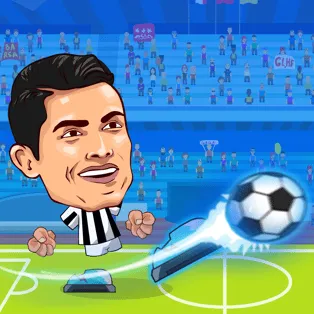Rurouni Kenshin stands as one of the most iconic and beloved manga series of all time. Created by Nobuhiro Watsuki, this historical action-drama has captivated readers worldwide with its compelling storytelling, memorable characters, and thrilling swordplay. Set in the early Meiji era of Japan, Rurouni Kenshin follows the journey of Himura Kenshin, a former assassin seeking redemption. Let’s dive deep into what makes this manga series a true masterpiece that continues to resonate with fans decades after its initial release.
The Legacy of Rurouni Kenshin
First serialized in Weekly Shonen Jump from 1994 to 1999, Rurouni Kenshin Manga quickly became a cultural phenomenon. The manga has sold over 72 million copies worldwide, cementing its place as one of the best-selling manga series of all time. Its popularity led to numerous adaptations, including anime series, films, and even stage productions.
The enduring appeal of Rurouni Kenshin lies in its perfect blend of historical fiction, intense action sequences, and deep character development. Watsuki’s meticulous research into the Meiji era and his dynamic art style bring the world of 19th century Japan to life in vivid detail.
A Tale of Redemption and Growth
At its core, Rurouni Kenshin is a story of redemption. The protagonist, Himura Kenshin, is a former assassin known as “Hitokiri Battousai” who has vowed never to kill again. This internal struggle forms the emotional backbone of the series, as Kenshin grapples with his violent past while striving to protect others without taking lives.
The manga explores themes of atonement, the weight of past actions, and the possibility of change. These universal themes resonate deeply with readers, making Kenshin’s journey both relatable and inspiring. As the story progresses, we see not only Kenshin’s growth but also the development of a rich cast of supporting characters, each with their own compelling arcs.
Character Depth and Development
One of the strengths of Rurouni Kenshin is its well-rounded cast of characters. From the spirited Kamiya Kaoru to the brash Sagara Sanosuke, each character brings a unique perspective and backstory to the narrative. The interactions between these characters drive the story forward and provide moments of humor, tension, and emotional depth.
Watsuki’s ability to create complex, multi-layered characters extends to the antagonists as well. Villains like Shishio Makoto and Yukishiro Enishi are not simply evil for the sake of being evil; they have motivations and philosophies that challenge Kenshin’s ideals, adding depth to the conflicts.
Masterful Storytelling and Action
Rurouni Kenshin is renowned for its expertly crafted story arcs and breathtaking action sequences. Watsuki’s storytelling prowess shines through in how he balances character-driven moments with high-stakes battles and overarching plot developments.
Epic Story Arcs
The manga is divided into several major arcs, each building upon the last to create a rich, interconnected narrative. From the introductory Tokyo Arc to the intense Kyoto Arc and the emotionally charged Jinchu Arc, each segment of the story introduces new challenges and deepens our understanding of the characters and their world.
The Kyoto Arc, in particular, is often hailed as one of the greatest story arcs in manga history. It perfectly balances political intrigue, personal stakes, and explosive action, culminating in a confrontation that pushes Kenshin to his limits both physically and emotionally.
Dynamic Combat and Swordsmanship
Rurouni Kenshin’s action scenes are a visual feast, showcasing Watsuki’s talent for dynamic panel layouts and fluid motion. The manga introduces a variety of sword techniques and fighting styles, each meticulously researched and grounded in historical martial arts.
What sets the combat in Rurouni Kenshin apart is how it serves the story and character development. Each battle is not just a display of skill, but a clash of ideologies and a test of the characters’ resolve. The way Kenshin adapts his swordsmanship to adhere to his vow of non-killing adds an extra layer of tension and creativity to the fights.
Cultural Impact and Influence
Rurouni Kenshin has left an indelible mark on the manga and anime landscape. Its influence can be seen in numerous subsequent works, particularly in how it popularized the concept of a reformed assassin protagonist and the blending of historical settings with supernatural elements.
The series has also played a significant role in introducing many international readers to Japanese history and culture. Through Rurouni Kenshin, fans have gained insight into the tumultuous Meiji era, samurai philosophy, and traditional Japanese values.
Adaptations and Continued Popularity
The enduring popularity of Rurouni Kenshin is evident in its numerous adaptations. The original anime series, which aired from 1996 to 1998, brought the manga to life with vibrant animation and a memorable soundtrack. More recently, a series of live-action films has introduced the story to a new generation of fans, showcasing impressive sword choreography and faithful character portrayals.
In 2023, a new anime adaptation began airing, reimagining the series with modern animation techniques while staying true to the source material. This revival has reignited interest in the franchise, with a third season announced for the future, demonstrating the timeless appeal of Kenshin’s story.
The Art of Rurouni Kenshin
Nobuhiro Watsuki’s art style is a crucial element of rurounikenshin.site success. His detailed linework and dynamic compositions bring the action to life, while his character designs are instantly recognizable and full of personality.
Watsuki’s art evolves noticeably over the course of the series, becoming more refined and expressive. His attention to historical detail in clothing, architecture, and weaponry helps immerse readers in the Meiji era setting, while his ability to convey emotion through facial expressions and body language adds depth to character interactions.
Iconic Character Designs
The character designs in Rurouni Kenshin are particularly noteworthy. Kenshin’s distinctive red hair, cross-shaped scar, and reverse-blade sword have become iconic in the world of manga. Each character’s appearance is carefully crafted to reflect their personality and background, from Sanosuke’s “evil” kanji jacket to Aoshi’s long trenchcoat.
These designs have made Rurouni Kenshin characters popular choices for cosplay and merchandise, further cementing the series’ place in pop culture.
Themes and Philosophy
Beyond its thrilling action and historical setting, Rurouni Kenshin explores deep philosophical themes that resonate with readers. The central conflict between Kenshin’s desire for atonement and the violent world he inhabits raises questions about the nature of justice, the possibility of redemption, and the cost of peace.
The manga also delves into the challenges of societal change, as characters grapple with the rapid modernization of Japan during the Meiji era. This theme of tradition versus progress is embodied in Kenshin himself, a man caught between his samurai past and the new era he helped create.
The Way of the Sword
Swordsmanship in Rurouni Kenshin is more than just a means of combat; it’s a philosophy and a way of life. Through characters like Kenshin and his master Hiko Seijuro, the manga explores different approaches to the sword and what it means to be truly strong.
Kenshin’s reverse-blade sword becomes a powerful symbol of his vow to protect without killing, challenging the traditional view of the sword as a weapon of death. This unique approach to swordsmanship sets Rurouni Kenshin apart from other action manga and adds depth to its exploration of violence and pacifism.
Conclusion: A Timeless Classic
Rurouni Kenshin remains a beloved classic in the world of manga, and for good reason. Its combination of historical drama, thrilling action, deep characters, and thought-provoking themes creates a rich tapestry that continues to captivate readers. Whether you’re a long-time fan or new to the series, Rurouni Kenshin offers a reading experience that is both entertaining and emotionally resonant.
As the franchise continues to evolve with new adaptations and a growing fanbase, it’s clear that the tale of the wandering swordsman will endure for years to come. Rurouni Kenshin stands as a testament to the power of manga as a storytelling medium, capable of blending action, history, and philosophy into an unforgettable narrative.
We’d love to hear from you! What are your favorite moments or characters from the Rurouni Kenshin manga series? How has this iconic story impacted your love for manga? Share your thoughts and experiences in the comments below!





























